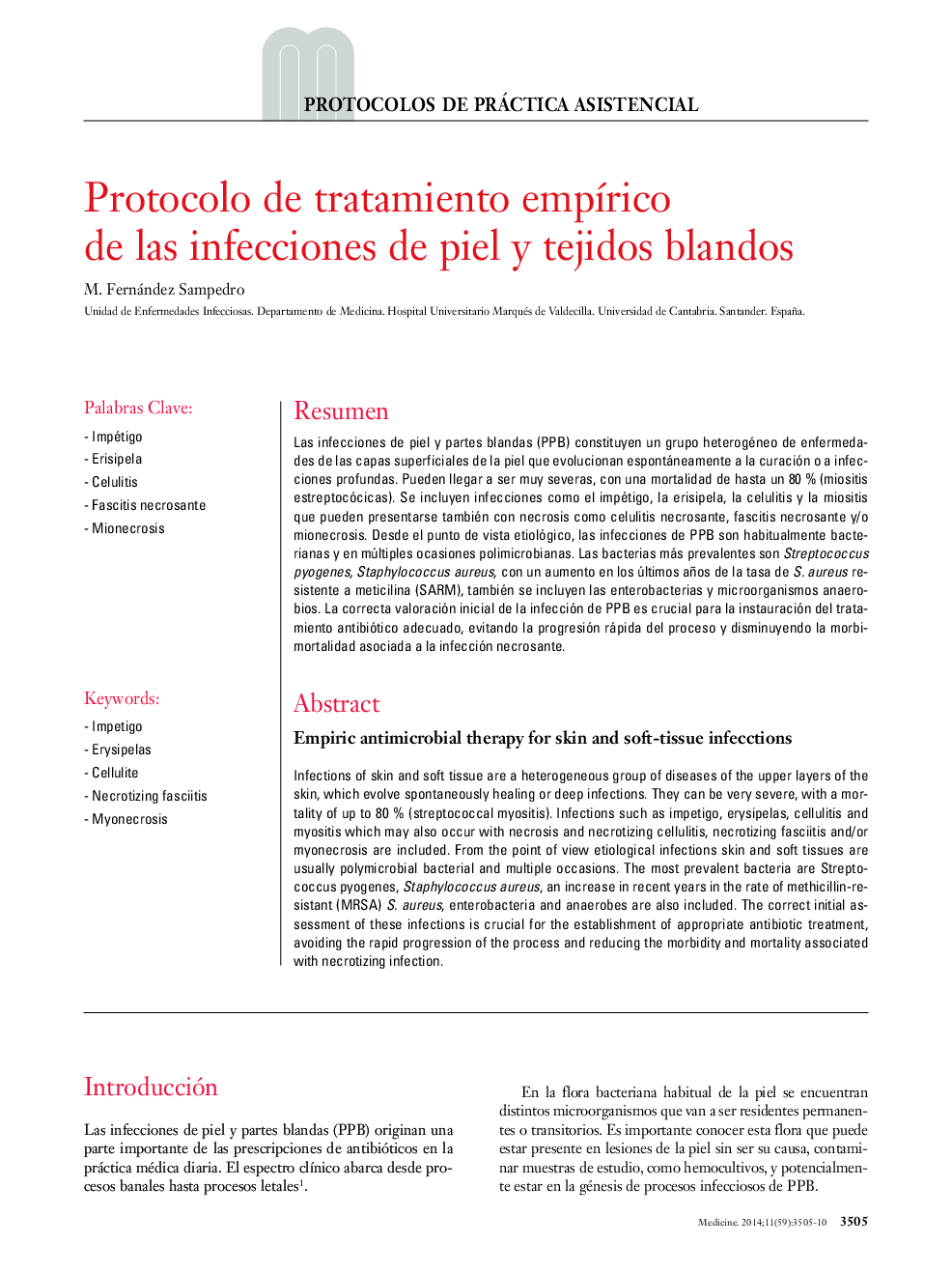| Article ID | Journal | Published Year | Pages | File Type |
|---|---|---|---|---|
| 3805652 | Medicine - Programa de Formación Médica Continuada Acreditado | 2014 | 6 Pages |
ResumenLas infecciones de piel y partes blandas (PPB) constituyen un grupo heterogéneo de enfermedades de las capas superficiales de la piel que evolucionan espontáneamente a la curación o a infecciones profundas. Pueden llegar a ser muy severas, con una mortalidad de hasta un 80 % (miositis estreptocócicas). Se incluyen infecciones como el impétigo, la erisipela, la celulitis y la miositis que pueden presentarse también con necrosis como celulitis necrosante, fascitis necrosante y/o mionecrosis. Desde el punto de vista etiológico, las infecciones de PPB son habitualmente bacterianas y en múltiples ocasiones polimicrobianas. Las bacterias más prevalentes son Streptococcus pyogenes, Staphylococcus aureus, con un aumento en los últimos años de la tasa de S. aureus resistente a meticilina (SARM), también se incluyen las enterobacterias y microorganismos anaerobios. La correcta valoración inicial de la infección de PPB es crucial para la instauración del tratamiento antibiótico adecuado, evitando la progresión rápida del proceso y disminuyendo la morbimortalidad asociada a la infección necrosante.
Infections of skin and soft tissue are a heterogeneous group of diseases of the upper layers of the skin, which evolve spontaneously healing or deep infections. They can be very severe, with a mortality of up to 80 % (streptococcal myositis). Infections such as impetigo, erysipelas, cellulitis and myositis which may also occur with necrosis and necrotizing cellulitis, necrotizing fasciitis and/or myonecrosis are included. From the point of view etiological infections skin and soft tissues are usually polymicrobial bacterial and multiple occasions. The most prevalent bacteria are Streptococcus pyogenes, Staphylococcus aureus, an increase in recent years in the rate of methicillin-resistant (MRSA) S. aureus, enterobacteria and anaerobes are also included. The correct initial assessment of these infections is crucial for the establishment of appropriate antibiotic treatment, avoiding the rapid progression of the process and reducing the morbidity and mortality associated with necrotizing infection.
